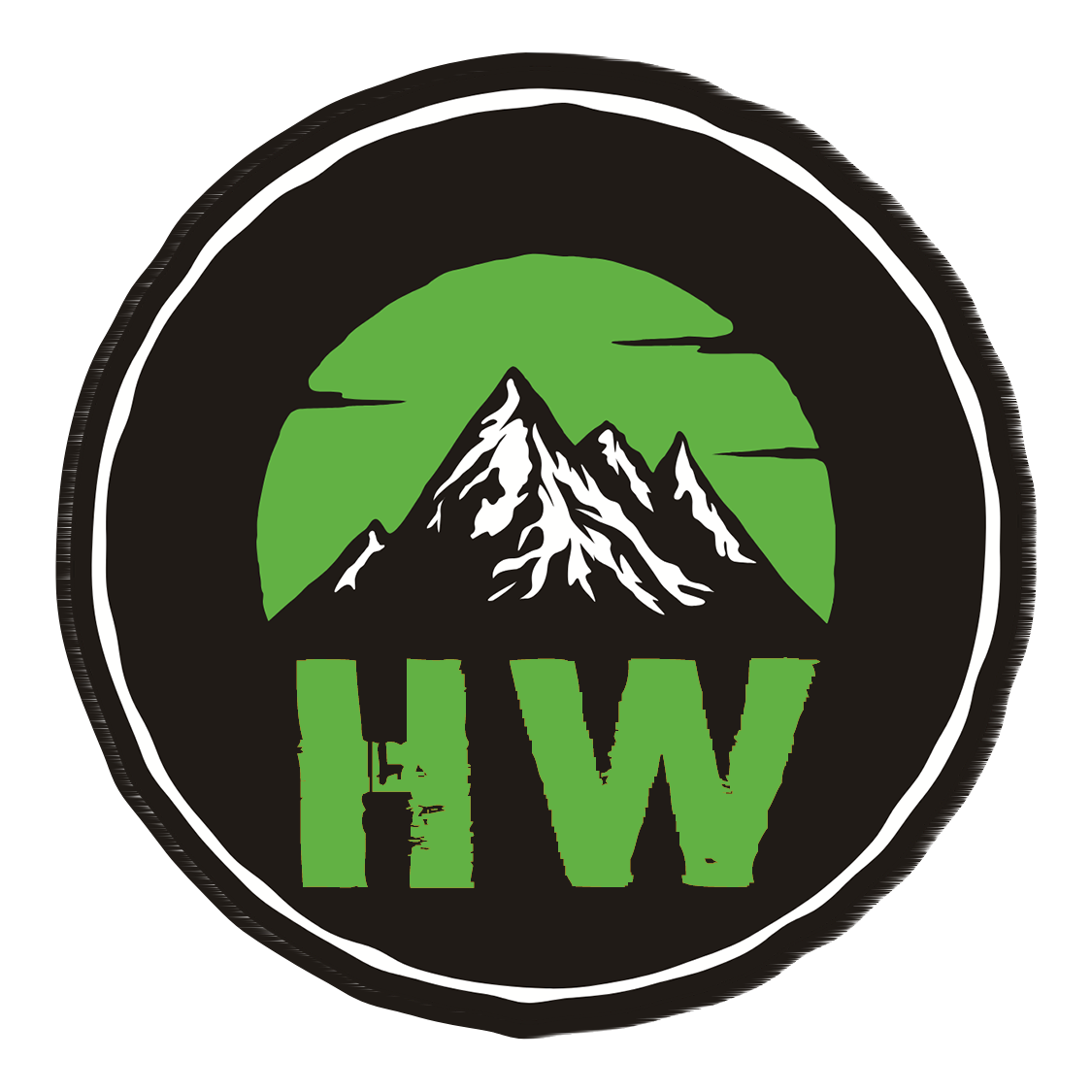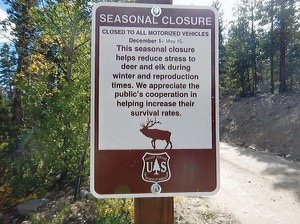What’s Your Route? How To Plan Your Off-Road Drive To Go Hunting
Planning your route maximizes the capability of your vehicle, either to your camp site or your trail head. Photo by J. Bales.
What’s Your Route?
We’ve all enjoyed our hunts at “No Tell ‘Em Creek”, and if you’re like us here at Hunt West, it takes a bit of a drive to get there. More times than not our favorite hunting spots require us to get off the blacktop and out onto the dirt, gravel, and two-track roads; sometimes even less than that. Once we leave asphalt that's where our off-road experience starts, whether it is a cozy graveled road or the remnants of what used to be a road; accessing the best campsite, trailhead, or pullout can make or break a hunt.
What is Off-Roading?
Many of us think of off-roading in one of many extremes like rock crawling or overland trails such as the Rubicon trail. However, a simple Google search for the definition defines off-roading as “the activity or sport of driving a motor vehicle over rough terrain”. These extremes of off-roading I view as the “sport” of driving over rough terrain. As outdoorsmen and women the activity of driving a motor vehicle over rough terrain is commonly a necessity as we look to explore the great outdoors. Off-roading to our hunting takes many
forms and requires different considerations when trying to determine accessibility.
Off-Roading Considerations When Planning a Hunt
When trying to access any part of the outdoors we need to consider how we get to our trailheads, campgrounds pullout, and glassing spots. Here are my top 5 considerations when planning my route to any destination.
Driving surface type
Road ownership/intended use
Weather
Topography
Mode of transportation
Surface Driving Type
The driving surface of a road helps gauge the amount of variability I am likely to see along the way. In general, my order of ease of access goes: Asphalt, Gravel, Dirt, then Sand. If a road is asphalt I am going to be considerably less concerned about running into road troubles. If the road is graveled, I tend to expect the possibility of narrower rougher roads that don’t see as much maintenance and generally, going to be easier access. For dirt roads, I consider anything that has not had material brought in for surface covering excluding sand. Dirt roads can have a multitude of issues or surprises.
Due to the unknowns, I tend to stay off of dirt roads with any highway vehicle that does not have a 4-wheel drive. For sand roads or sandstone roads, I recommend knowing vehicle and driver capability and avoid if possible. If sand is not avoidable having 4-wheel drive, a shovel, and as much sand recovery gear possible as it can be unpredictable and conditions can change quickly. For more information about sand, I recommend talking to folks who drive those roads regularly and can help give guidance, like local biologists and wardens for a hunt.
Road Ownership/Intended Use
“National Parks, State Parks, and Wildlife areas are a variety of conditions, cover types, and uses as well, and recommend finding a site-specific map of the area to look for all road information including road closures.”
While determining driving surface type I will also be looking for road ownership and intended use of that road. In the West roads such as freeways and highways are generally asphalt, well-maintained, and easily travelable whether they are federally or state-owned. County roads tend to be asphalt and gravel roads, but generally well maintained. However, depending on the County, road maintenance can only happen once or twice a year allowing for conditions to be slightly deteriorated such as washboard on gravel. United States Forest Service, Bureau of Land Management, Bureau of Reclamation, and other federally owned lands tend to have large variability in road conditions across the West. The roads may be all but a highway and as little of a trail designed for jeeps, side-by-sides, or 4-wheelers. These roads may require more research to determine what their intended use is. Most roads driveable by the majority of motor vehicles will have some sort of designation easily found on digital maps and agency websites. These roads tend to be more susceptible to seasonal closures, and or vehicle size restrictions. National Parks, State Parks, and Wildlife areas are a variety of conditions, cover types, and uses as well, and recommend finding a site-specific map of the area to look for all road information including road closures.
Weather - What’s Happened/What’s Coming?
“The recent weather in a given area can change road conditions fairly drastically making altering the access in and out of any given place.”
Weather plays a big part in route planning because it can not only affect the roads going in but coming out as well. When planning a trip into the great outdoors we should all be aware of the weather and prepared anyways. Adding the extra thought of how it would affect travel is just as important. The recent weather in a given area can change road conditions fairly drastically making altering the access in and out of any given place. When it comes to weather the three conditions that generally make the most difference are rain, snow, and wind as they tend to have the most effect on eroding road materials adding obstacles, and or impacting tire grip. Knowing the road surface type and road ownership/intended use helps us plan for all types of weather and can help with preparations. Weather changes all road-type conditions. I recommend studying the local weather that occurs, before, during, and after your trip to be best prepared for all situations.
Topography - Where On The Mountain?
I find topography to be an important consideration as it can directly impact road conditions. If a road is cut along a hillside it can be expected to be a runoff point which may erode part of all of the road. If a road is in the bottom of a narrow draw it could be likely to have water, debris, and or rock collected in or around the road. If the road is on top of a hillside it is more susceptible to weather as you are on an opening with nothing to block different conditions. If the road runs next to major topographic features such as waterways hills and cliffs be aware they could be undermined and or become eroded with weather. Finally in general the steeper the road the more difficult to go up and down regardless of what type of road it may be.
Mode of Transportation
Probably the most important is your mode of transportation. When planning your route consider what you are doing while out and the other considerations from above will help determine where you can and cannot go. Knowing the drive type, ground clearance, overall height, length, and weight of your vehicle can help make a world of difference when determining where you can and can’t go. There are four drive types of vehicles, all-wheel drive (AWD), 4-wheel drive (4WD), front-wheel drive (FWD), and rear-wheel drive (RWD). Knowing which vehicle drive type you have can help you determine the baseline of your vehicle's capabilities off-road. In general, 4wd is going to be the most capable of the roads and trails. Ground clearance is going to affect your ability to maneuver over holes, debris, and anything else you want to drive over. The more ground clearance you have the less likely to scrape the bottom of your vehicle. All that being said once you increase your ground clearance the overall height of your vehicle rises which can make it difficult to get under obstacles that may be obstructing the road, primarily trees. Weight having an idea of the general weight of your vehicle can come into play as it can increase your ground contact with your tires. Being aware of the length of your vehicle is very important as it affects the agility of your vehicle. Longer vehicles can hold more things and help in certain terrain, while shorter vehicles can get into tighter places such as a steep mountain road with tight switchbacks.
“When hunting we commonly take campers, camp trailers, horse trailers, or even full-blown RVs to assist in our hunts. These items add height, weight, and length and tend to take away from ground clearance.”
Weight can also be a burden by making your vehicle work harder to up and down hills. With these in mind, you may need to determine what your goal is at the end of your route. When hunting we commonly take campers, camp trailers, horse trailers, or even full-blown RVs to assist in our hunts. These items add height, weight, and length and tend to take away from ground clearance. Full-sized pickup trucks and SUVs such as a Ram 3500 or GMC typically are RWD or 4WD and have decent ground clearance, but normally longer, heavier and taller vehicles. Mid-sized trucks and SUVs such as a Toyota Tacoma or a Jeep Wrangler typically are 4WD or RWD with decent ground clearance, not too long, tall, or heavy. Small SUVs, crossovers, and cars such as a Subaru Outback, Toyota Rav 4, or the classic sedan are typically AWD or FWD low to the ground but light, short, and maneuverable. They work for hunting but only in certain circumstances.
All vehicles regardless of their attributes have their unique capabilities, some of those capabilities make others better for off-road travel than others. Depending on what you drive and or can drive you may have to game plan to bring support vehicles such as side-by-sides or 4-wheelers to help navigate your way.






